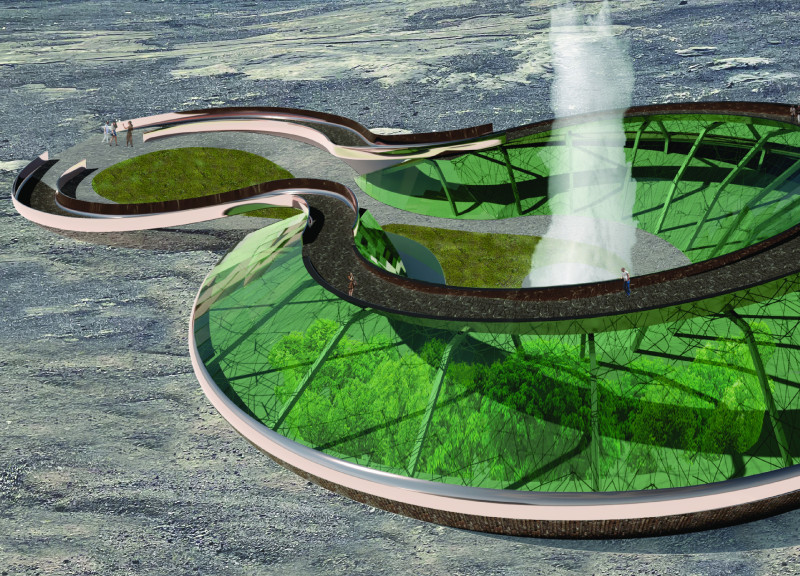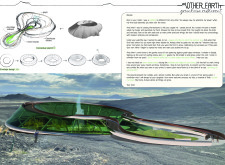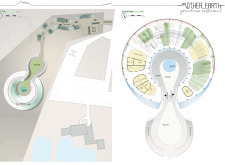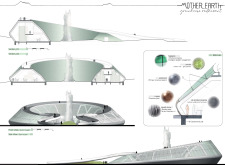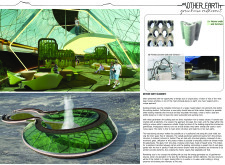5 key facts about this project
The project features an elliptical design that mimics geological formations, enhancing the structure's integration with the landscape. Central to the design is a geyser-like geothermal feature that adds a dynamic visual and auditory element, reinforcing the relationship between the structure and its natural surroundings. The site organization facilitates pedestrian movement and encourages exploration, incorporating pathways that lead visitors through various zones, including dining, educational spaces, and greenhouse areas.
Innovative Design Approaches
One of the defining aspects of the Mother Earth project is its innovative use of materials and sustainability practices. The primary materials include Sagerglass, basalt stone, aluminum, copper, and 3D-printed concrete. Each material was carefully selected not only for its performance but also for its low environmental impact. The use of local basalt stone grounds the building in its geological context, while 3D-printed concrete offers flexibility in design and efficient fabrication methods.
The greenhouse aspect of the restaurant plays a crucial role in mitigating energy use by incorporating plant life into the dining environment. This integration of greenery not only enhances aesthetic appeal but also contributes to improved air quality and emotional well-being for guests. The geothermal energy harnessed from the local environment enables the restaurant to operate sustainably, further emphasizing the project's commitment to ecological responsibility.
Community and Educational Integration
In addition to its primary function as a dining establishment, the Mother Earth Restaurant is designed to educate visitors about local ecosystems and geological systems. Informational displays and interactive installations are incorporated throughout the design, making it informative for guests of all ages. This educational focus promotes a deeper understanding of the importance of environmental conservation.
The architectural layout encourages social interaction and engagement, with strategically placed communal areas that foster community connections. This sense of community is integral to the project, as it aims to create a gathering space that serves both local residents and visitors.
For more technical insights into the Mother Earth Greenhouse Restaurant, including architectural plans, sections, and design ideas, readers are encouraged to explore the project presentation in greater depth. Detailed analysis of architectural features and materials can provide further understanding of the project’s innovative approach to sustainable architecture.


